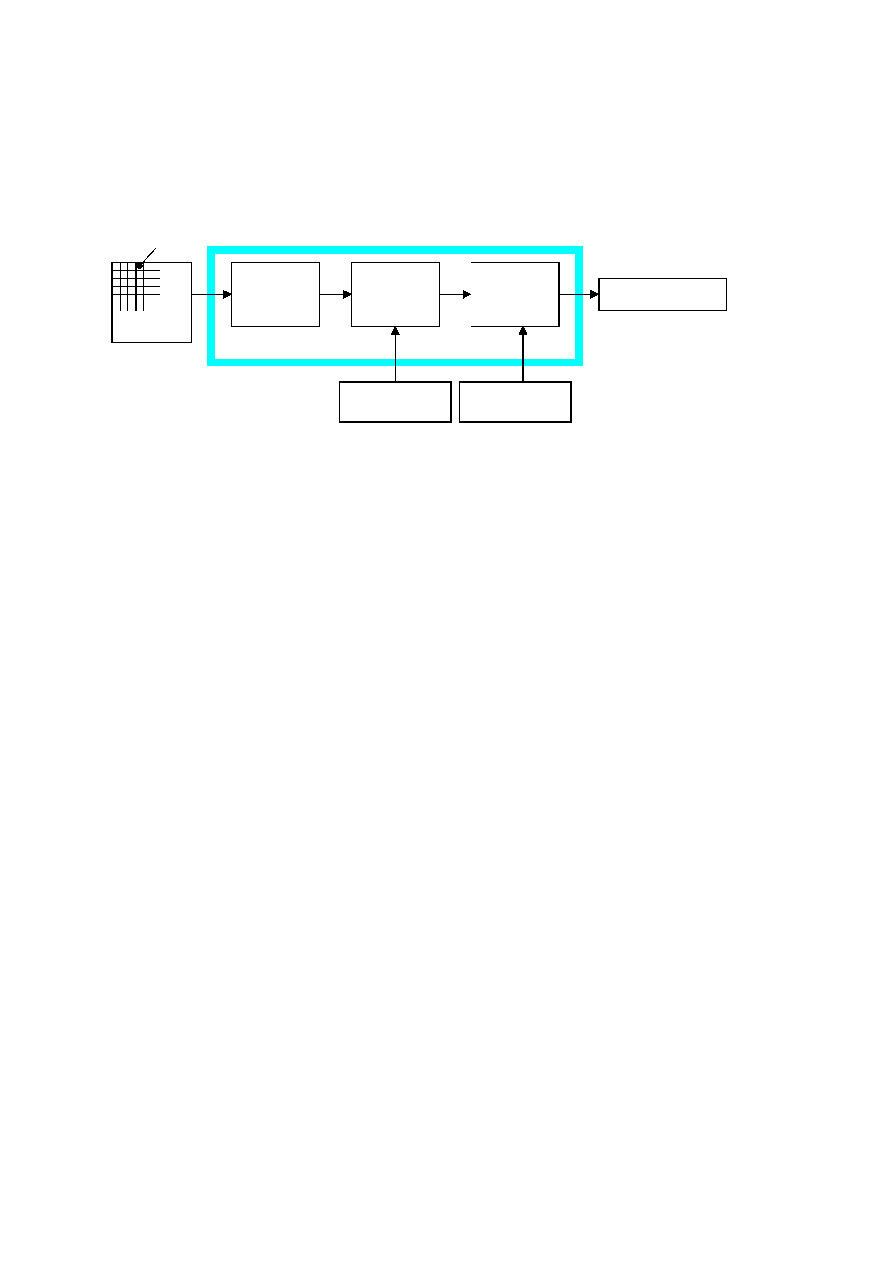
component image; this is an appropriate simplification for overview purposes, because all processes specified in this
Specification operate on each image component independently.
DC coefficient and the other 63 as the AC coefficients.
by one of the table specifications shown in Figure 4). No default values for quantization tables are specified in this
Specification; applications may specify values which customize picture quality for their particular image characteristics,
display devices, and viewing conditions.
5. The previous quantized DC coefficient is used to predict the current quantized DC coefficient, and the difference is
encoded. The 63 quantized AC coefficients undergo no such differential encoding, but are converted into a one-
dimensional zig-zag sequence, as shown in Figure 5.
two entropy coding procedures can be used, as described in 4.6. If Huffman encoding is used, Huffman table
specifications must be provided to the encoder. If arithmetic encoding is used, arithmetic coding conditioning table
specifications may be provided, otherwise the default conditioning table specifications shall be used.
inverse of its corresponding main procedure within the encoder. The entropy decoder decodes the zig-zag sequence of
quantized DCT coefficients. After dequantization the DCT coefficients are transformed to an 8
up to three neighbourhood samples at positions a, b, and c to form a prediction of the sample at position x as shown in
Figure 8. This prediction is then subtracted from the actual value of the sample at position x, and the difference is
losslessly entropy-coded by either Huffman or arithmetic coding.